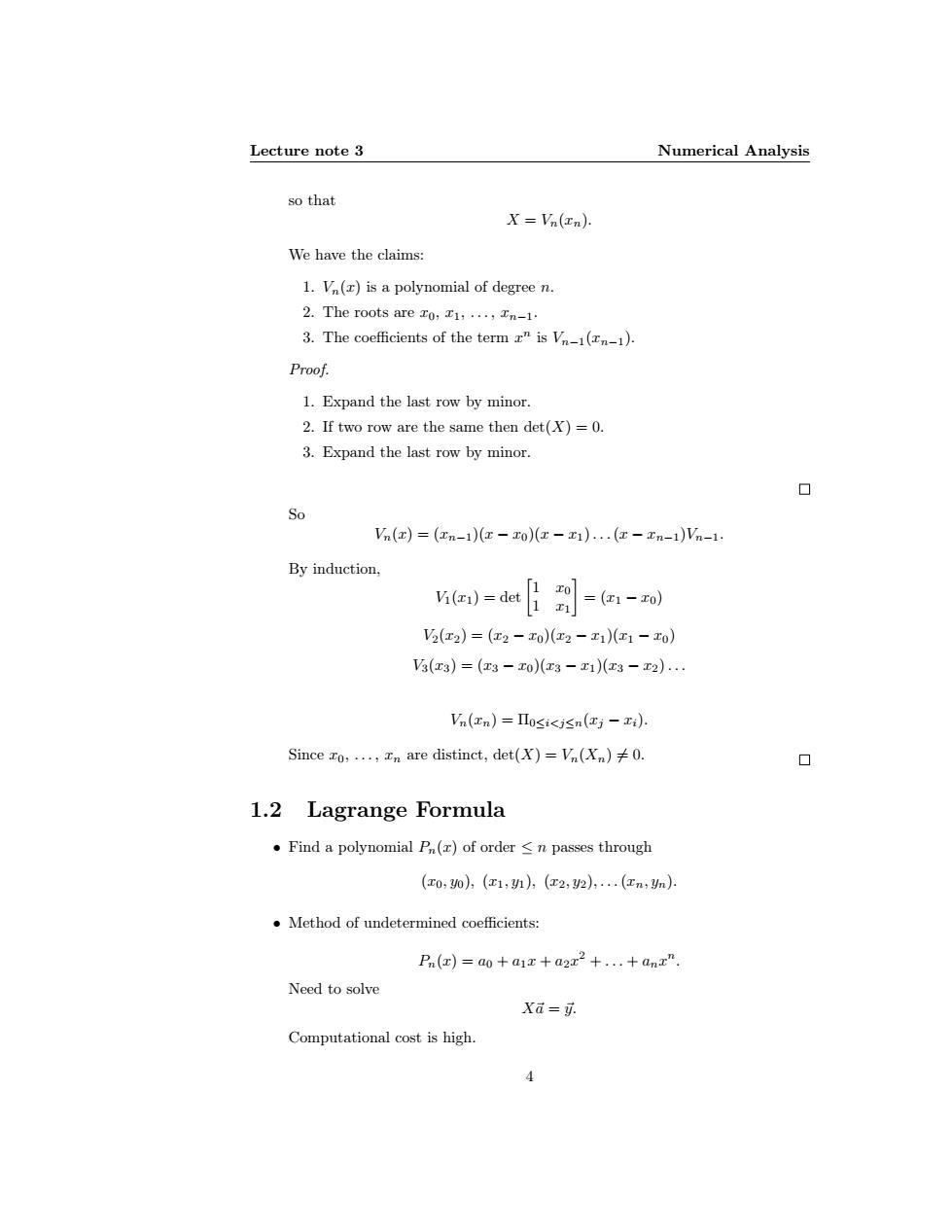正在加载图片...

Lecture note 3 Numerical Analysis so that X=Vn(In). We have the claims: 1.Vn(r)is a polynomial of degree n. 2.The roots are zo,1,...,In-1. 3.The coefficients of the term z"is Vn-1(n-1). Proof. 1.Expand the last row by minor. 2.If two row are the same then det(X)=0. 3.Expand the last row by minor. ◇ So Vn(z)=(2n-1)(x-z0)(-z1)...(x-In-1)Vn-1. By induction, ⅓a=dtl到=a-到 V2(x2)=(x2-t0)(x2-x1)(r1-x0) (x3)=(x3-to)(x3-x1)(a3-x2).. Vn(xn)=Πl0≤i<jsn(rj-xi. Since zo,...,n are distinct,det(X)=Vn(Xn)0. 0 1.2 Lagrange Formula Find a polynomial P(z)of order <n passes through (r0,0),(x1,班),(x2,2),.(rn,h) Method of undetermined coefficients: Pn(z)=a0+a1x+a2x2+..+anx”. Need to solve Xa=灭 Computational cost is high. 4Lecture note 3 Numerical Analysis so that X = Vn(xn). We have the claims: 1. Vn(x) is a polynomial of degree n. 2. The roots are x0, x1, . . . , xn−1. 3. The coefficients of the term x n is Vn−1(xn−1). Proof. 1. Expand the last row by minor. 2. If two row are the same then det(X) = 0. 3. Expand the last row by minor. So Vn(x) = (xn−1)(x − x0)(x − x1). . .(x − xn−1)Vn−1. By induction, V1(x1) = det 1 x0 1 x1 = (x1 − x0) V2(x2) = (x2 − x0)(x2 − x1)(x1 − x0) V3(x3) = (x3 − x0)(x3 − x1)(x3 − x2). . . Vn(xn) = Π0≤i<j≤n(xj − xi). Since x0, . . . , xn are distinct, det(X) = Vn(Xn) 6= 0. 1.2 Lagrange Formula • Find a polynomial Pn(x) of order ≤ n passes through (x0, y0), (x1, y1), (x2, y2), . . .(xn, yn). • Method of undetermined coefficients: Pn(x) = a0 + a1x + a2x 2 + . . . + anx n . Need to solve X~a = ~y. Computational cost is high. 4